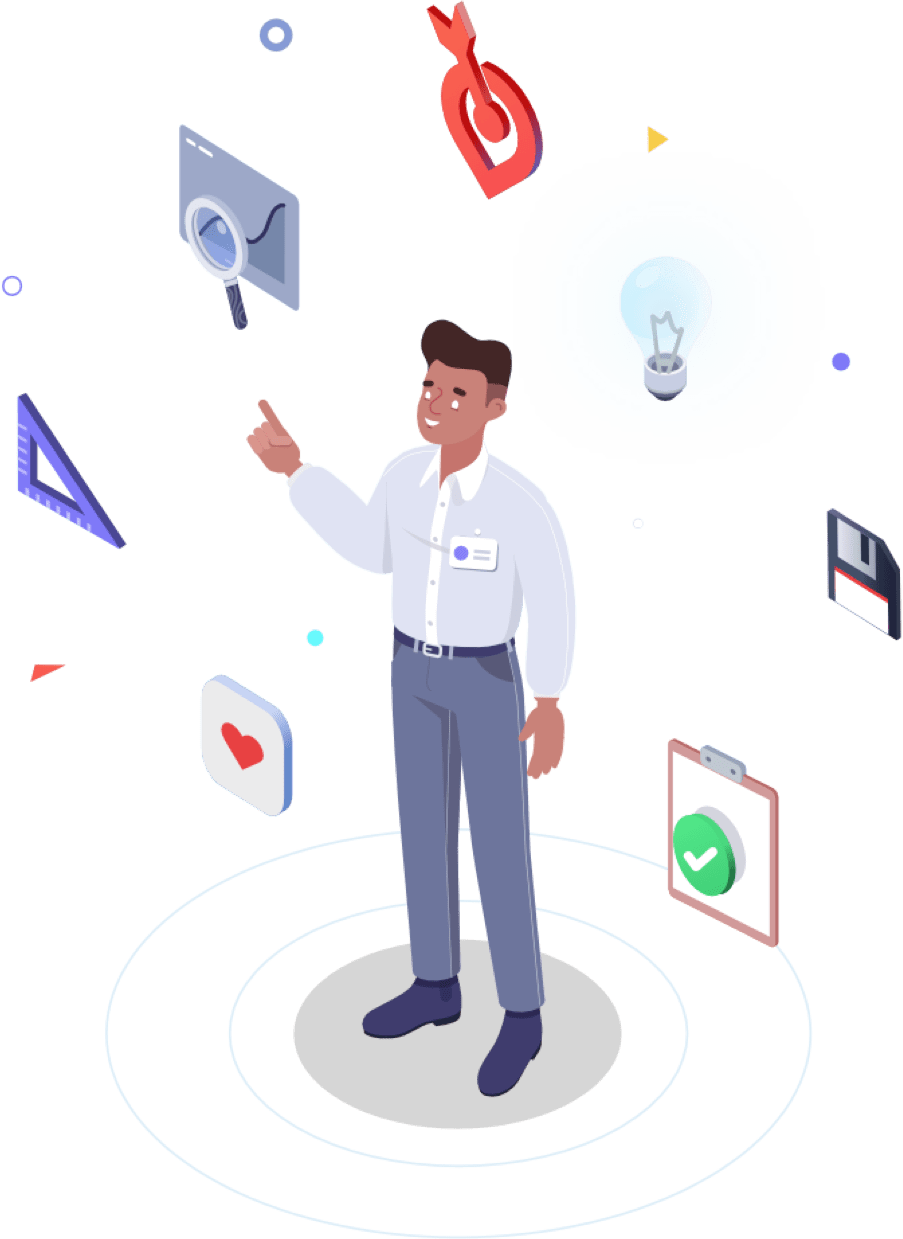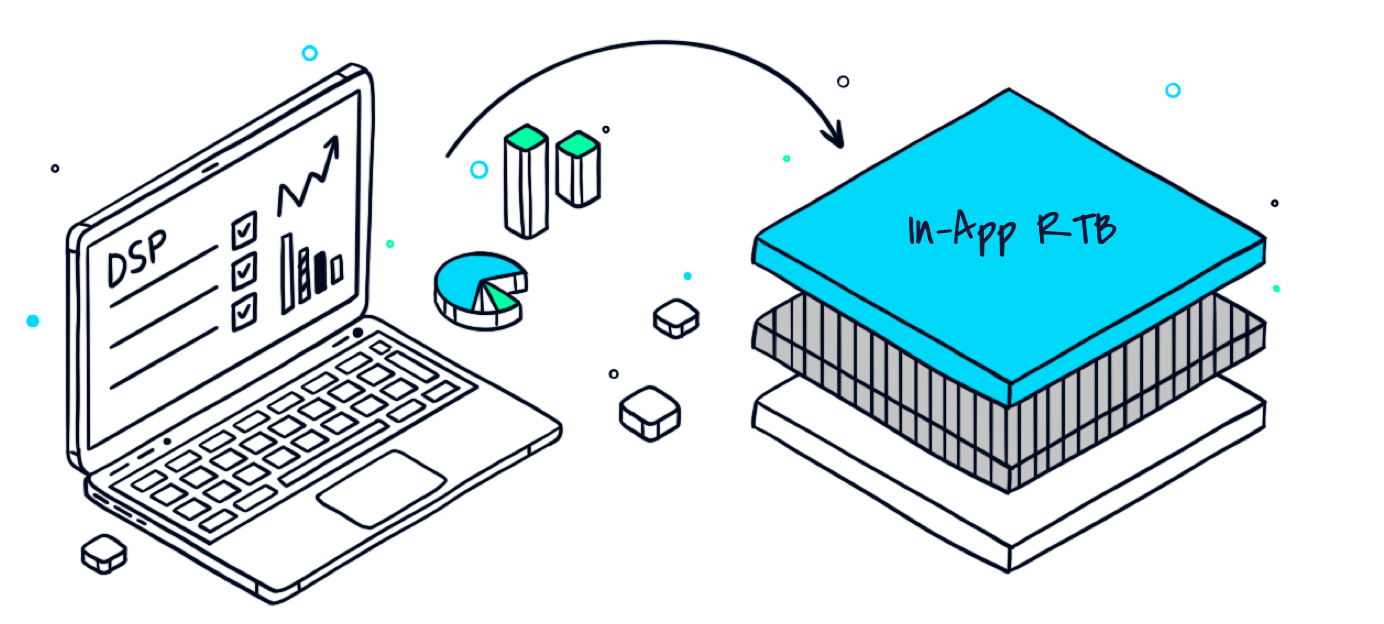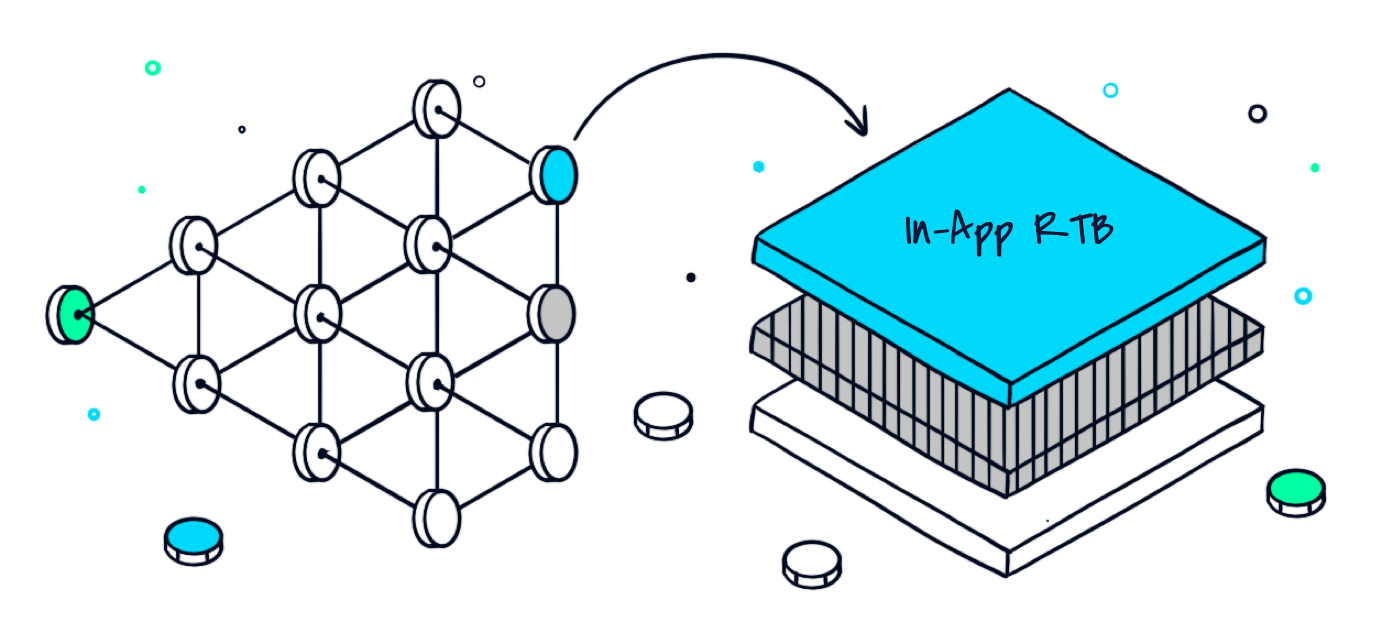Your source for everything mobile UA, from the basics to contentious standards, the glossary can help and inform both aspiring growth managers and experienced mobile app developers

Real-time bidding
Choosing a DSP (Demand Side Platform) -> Page 1 of
Choosing a DSP (Demand Side Platform)
The mobile app marketing industry is evolving towards automation, with companies increasing their spending on programmatic media buying, and shifting away from establishing and managing direct advertiser\publisher relationships that are difficult to set up and sustain. While Ad Networks still exist, there’s a shift towards Programmatic DSPs and ML-Based DSPs.
The shift to programmatic and ML-based media buying led to the development of different solutions and services available for marketing managers looking for growth opportunities. The three main options are In-house DSP, a Self-service DSP, and a Managed DSP and here we’ll elaborate about the differences and advantages each platform offers.


An In-house DSP refers to a self-developed DSP, a platform uniquely built for the company. There are many advantages to an In-house DSP: full control over the campaigns, full cost transparency, no data sharing (all of the aggregated data regarding the users stays within the company), and so on.
An In-house DSP is a highly rare solution since most companies simply can’t afford it. Building a DSP requires investing resources in infrastructure and development, recruiting teams to develop and maintain it (data scientists, product managers, and an operational team). It’s essentially building a whole new product within a company and those who can afford it are possibly corporate-sized companies (and they too probably wouldn’t opt for creating a whole new product). For the rest, it’s simply unrealistic. Most companies are faced with a choice between the two alternative solutions: a Self-Service DSP and a Managed DSP.
“Marketers and agencies want and need the benefits of domain-specific AI capabilities. However, they also recognize that to build the capabilities themselves it would involve a commitment to a multi-year project, dedicated resources and investment on an ongoing basis across multiple platforms with no guarantee of a successful outcome” – Matt Nash, MD @ Scibids


A Self-Service DSP is a DSP service built and managed by another company, providing marketers access to a platform in which they can manage their own campaigns. This allows control over the campaigns but usually have three distinct disadvantages:
- Limited targeting options – i.e it’s not feasible/possible to target at the user-level.
- Data-sharing with a third party – Having to share your suppression list with the DSP providing the service.
- The Inability to draw actionable insights – Whether a campaign performs well or bad, the insights are limited to the data provided (location, device, gender, or age) whereas, in a managed DSP, the insights can be significantly valuable, as detailed in the managed DSP section.
Under the Self-Service DSP umbrella, there’s another type of DSP called Bidder as a Service. Bidder as a Service once again enables marketers to manage their own campaigns but, in this case, those services offer some form of customization through the use of machine-learning (i.e not just programmatic). An algorithm that can be set, using existing features, to target users better and deliver better results.
Using Bidder as a Service to its full theoretical potential requires having a data scientist on your team, working alongside a marketing\campagin manager. With a data scientist working on the campaign, using machine learning to its fullest and most granular level by generating custom user attributes for models is still limited and costs significant additional fees. The targeting it enables, though, is closer to being actually user-level.
The Managed DSP


A Managed DSP refers to programmatic DSPs, where a company had built its own proprietary bidder and offers a full suite of services to marketers – from setting up the campaigns to managing, optimizing, and meeting their KPIs. A Managed DSP, in some cases, will also be ML-based.
A managed DSP has a couple of stand-out advantages. The first one is that it requires almost no involvement from the marketing managers – the DSP sets up the campaign and manages it fully, while the marketing manager only has to track and monitor the campaign.
The second advantage is in the effectiveness derived from a machine learning model fine-tuned for your acquisition requirements – a campaign that is legitimately ML-based can target at the user level, detect and draw conclusions based on behavioral data, and predict accordingly (depending on the set KPIs it can predict which users are most likely to install, deposit, or potentially have the highest retention), enabling it to sift through users rather than making decisions at a shallower level, like placements, or device models.
Some of the disadvantages are as follows:
- Lack of Control – Since someone else is managing the campaign, the marketer has no control over it. This is a claim often relied by marketers but can be easily resolved when setting mutual expectations, providing access to a detailed, real-time, tracking platform, and keeping an open communication line.
- Data-sharing with a third party – Having to share your suppression list with the DSP providing the service.
- ML Based Campaigns Require Time – In order to successfully run an ML-based campaign, the machine has to first learn. In order to reach scale and positive ROI, in the long run, marketers will have to gather some patience for the starting low-scale, higher-costs stages of the campaign.
.
The way to achieve trust for both sides is through transparency – the more data shared regarding the way campaigns are managed and what considerations are being made while bidding by the DSP, and the more accessible the campaign details are, the easier it should be for the advertiser to understand they are in good, capable hands.
Diving Deeper
In order to make an informed decision between the two options (self-service and managed), we’re going to get into the details of the differences from the targeting capabilities, to payment models, and long term results.
Targeting Capabilities
In a self-service DSP targeting options are limited. Marketers can target according to real-time data that is accessible at the bid-level (such as ad placement, device type, time of day, location, etc’).
In a bidder as a service, on the other hand, marketers can take their targeting capabilities a step further, creating their own algorithm that uses existing model features (i.e attributes that the bidder service defined as important targeting attributes), and reach user-level targeting (within the limitations of the existing features). While this improves targeting, it also increases costs, since any added capabilities in a bidder as a service require an additional cost. This means that improving your targeting might not be cost-effective.
A managed DSP can provide the most customized targeting, with models specific to an app and features made specifically to match users’ behavioral data. Managed DSPs also apply data enrichment and use aggregated data to improve their targeting, reaching, and possibly even exceeding, KPIs over time.
The best way to exemplify the advantage of customized features is by sharing a case of a well-known weather app. Our campaign for the app started at an exploratory stage where we targeted new devices in the US (a targeting feature that isn’t available in a self-service DSP). After a short period, we noticed a shift in the results – we got higher retention rates the longer the campaign ran. We looked into the model’s decision making, in an attempt to explain these exceptional results, and saw that the algorithm’s model, that changed based on real-time data, started targeting states that had bad weather (storm alerts, flood warnings, etc’..) because those were the states where users most frequently used the app. As with its given name, the machine learned who to target and the model changed according to the results, yielding even better results.
Running the same campaign in a self-service DSP will be much more challenging. Since the new devices feature doesn’t exist, new devices can’t be specifically targeted, which means the exploratory stage will have a much wider initial targeting. These results will then have to be downloaded and analyzed after the fact. Then it’d be up to the marketing manager to deduct and conclude why some states were performing better when they did. Even reaching this improbable conclusion will then result in having to manually customize the bids according to the changing weather, missing out on the benefits of real-time data and automation and wasting human resources that are trying to keep up with this constant change.
ROAS
At the end of the day, marketers look at their ROAS. Payment models in the different DSPs may be identical (CPM being the most common) but the risk involved in running these campaigns differs greatly.
A self-service DSP and its limited targeting options might give off the biggest feeling of control, but, in reality, will create the biggest risk (marketers spend on impressions without probability insights). A bidder-as-a-service might provide better results, but the added costs will affect and lower the ROAS, and a managed DSP, having the capability to target based on probability and run campaigns based on performance, should serve as a risk-free model and theoretically show better results from the start.
Creatives
Creatives today can be customized to match the users – what they prefer to see and engage with based on data of past interactions. This technology is seen throughout different marketing platforms as well as on social marketing platforms. The difference is in the ability to customize the ad at the user-level, which in turn is reserved for those able to target at the user-level.
Managed DSPs, if they provide such a service, will have the necessary data and the technological capability to generate a user-level customized ad. Self-service DSPs, on the other hand, while still capable of customization, will be limited to data provided through bid requests (device, location, local time, placements) with some possible data enrichment.
Making a Choice
Every app is unique, it has unique KPIs, and can afford spending differently sized budgets. Before committing to a certain platform, do your research, and test the waters. If you have the budget, we’d recommend trying out different platforms in parallel, testing their targeting capabilities, their transparency and the insights you can gain, and potential for scale and profitability. You’d probably end up using a couple of different platforms, each with their own advantages.
We recently had the opportunity to take part in an article by Adjust, titled How to Choose the Right Mobile DSP for Growth, and contributed our insights.
